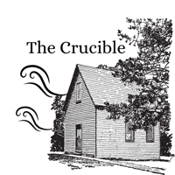
Overview
Synopsis
In the insular, Puritan community of 1692 Salem, Massachusetts, a group of young girls are found dancing in the woods, and immediately fall ill. When no earthly cause can be determined, the citizens of Salem suspect that some more sinister force may be at hand. As long-held grudges turn to violent disputes, humiliating secrets are exposed and disseminated, and the line between truth and pretense becomes increasingly blurry, the citizens’ dogged determination to root out evil becomes more dangerous than the evil itself. When the burden of proof is invisible and the crime too terrible to name, everyone becomes a suspect and no one is safe. The Crucible, Arthur Miller’s remarkable 1953 play, remains as relevant as ever, and carries with it a stern warning: in every community torn by suspicion, the most dangerous threat may be the community itself.
Show Information
Context
Show Origins
Through the late 1940s and 1950s, the United States experienced the Red Scare: a widespread fear of Communism and the influence of the Soviet Union on America’s institutions. U.S. Senator Joseph McCarthy spearheaded an anti-Communist campaign that came to be called McCarthyism. In the House of Representatives, the House Un-American Activities Committee investigated possible Communists in American institutions, most notably Hollywood and the film industry. Prominent actors,
to read the context for The Crucible and to unlock other amazing theatre resources!Plot
Act One
On his knees, in the bedroom of his home in Salem, Reverend Parris prays over his ten-year-old daughter, Betty, who lies asleep. His niece, seventeen-year-old Abigail Williams, enters the room to tell him that Susanna Walcott, another young girl, has arrived with news from the doctor. Susanna informs Parris that Doctor Griggs cannot find a diagnosis for Betty’s illness in any of his books, and that he should, perhaps, look to “unnatural causes.”
Parris orders Susanna out, and
to read the plot for The Crucible and to unlock other amazing theatre resources!Characters
| Name | Part Size | Gender | Vocal Part |
|---|---|---|---|
|
Lead |
Female |
Spoken |
|
|
Lead |
Female |
Spoken |
|
|
Lead |
Male |
Spoken |
|
|
Supporting |
Male |
Spoken |
|
|
Supporting |
Female |
Spoken |
|
|
Supporting |
Male |
Spoken |
|
|
Supporting |
Male |
Spoken |
|
|
Supporting |
Male |
Spoken |
|
|
Featured |
Female |
Spoken |
|
|
Featured |
Male |
Spoken |
|
|
Featured |
Male |
Spoken |
|
|
Featured |
Male |
Spoken |
|
|
Featured |
Female |
Spoken |
|
|
Featured |
Female |
Spoken |
|
|
Featured |
Female |
Spoken |
|
|
Featured |
Male |
Spoken |
|
|
Featured |
Male |
Spoken |
|
|
Featured |
Female |
Spoken |
|
|
Featured |
Female |
Spoken |
|
|
Featured |
Female |
Spoken |
|
|
Featured |
Male |
Silent |
|
|
Ensemble |
Female |
Spoken |
Songs
A song with an asterisk (*) before the title indicates a dance number; a character listed in a song with an asterisk (*) by the character's name indicates that the character exclusively serves as a dancer in this song, which is sung by other characters.
Monologues
Scenes
Key Terms
A character in their teenage years, often portrayed as navigating identity, rebellion, and emotional growth.
Allegory is a storytelling device in which characters, events, and settings represent abstract ideas or moral qualities. In theatre, allegorical plays often deliver social, political, or religious messages beneath their surface narrative.
An allusion is an indirect reference to another work of literature, art, historical event, or cultural figure. Playwrights often use allusions to add deeper meaning or context to a character’s dialogue or a scene.
A comparison between one thing and another, typically for the purpose of explanation or clarification.
A political ideology often depicted or explored in 20th-century epic or protest theatre for social critique.
A detailed evaluation or analysis of a performance or production, offering constructive feedback.
A 20th-century government body whose influence on censorship and blacklisting shaped theatre’s political landscape.
A period in the 1950s marked by anti-communist sentiment in the United States, during which many artists and performers were blacklisted. The McCarthy Era had a profound impact on American theatre and its themes of censorship and political freedom.
A term used in postmodern and cultural theory to refer to anyone perceived as different or outside the dominant group. The concept of the Other influences character dynamics and social commentary in theatre.
A malleable metal alloy, traditionally consisting of tin and lead.
A doll or small figure of a person, often used in folk magic or witchcraft.
A member of a Protestant sect that opposed theatre in 17th-century England. Their influence contributed to the temporary closure of theatres during that era.
A religious and cultural movement that led to censorship and the temporary closing of English theatres in the 17th century.
A period of intense fear of communism in the U.S., reflected in politically charged theatre from the 20th century.
An organization in the United States that advocates for the rights of playwrights, composers, and lyricists.
A system of government in which priests rule in the name of God or a god.
Videos
Quizzes
Themes, Symbols & Motifs
THEMES
Hysteria
Miller connects the McCarthy
to read about the themes, symbols and motifs from The Crucible and to unlock other amazing theatre resources!Quote Analysis
_If she is innocent! Why do you never wonder if
to read our analysis of select quotes from The Crucible and to unlock other amazing theatre resources!
